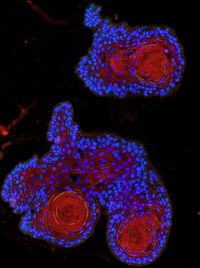Lung tumours are classified into two main groups according to morphological features, localisation, marker expression and genetic properties: non-small cell lung cancer (NSCLC) and small cell lung cancer (SCLC). In recent years the main focus of lung cancer-related research has been towards NSCLC, which accounts for roughly 80% of all diagnosed lung tumours. NSCLC is not homogeneous, and can be further classified based on morphological features and differences in marker expression into Adenocarcinomas (ADC) (50%), Squamous Cell Carcinomas (SCC) (40%) and Large Cell Carcinomas (10%). Most mouse model systems were developed to model ADC. Surprisingly, although 30% of all lung tumours diagnosed are SCC, so far autochthonous and inducible mouse models of this tumour type are scarce. Using publicly available genomic analyses of human NSCLC patient samples and comparing analyses of SCC and ADC tumours, we found that E3-ligases are frequently mutated in NSCLC together with mutations in p53 and the tumour drivers KRAS, EGFR and PIK3CA.
